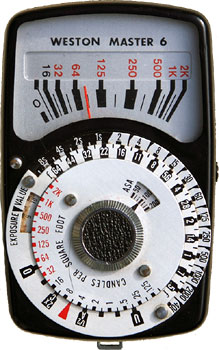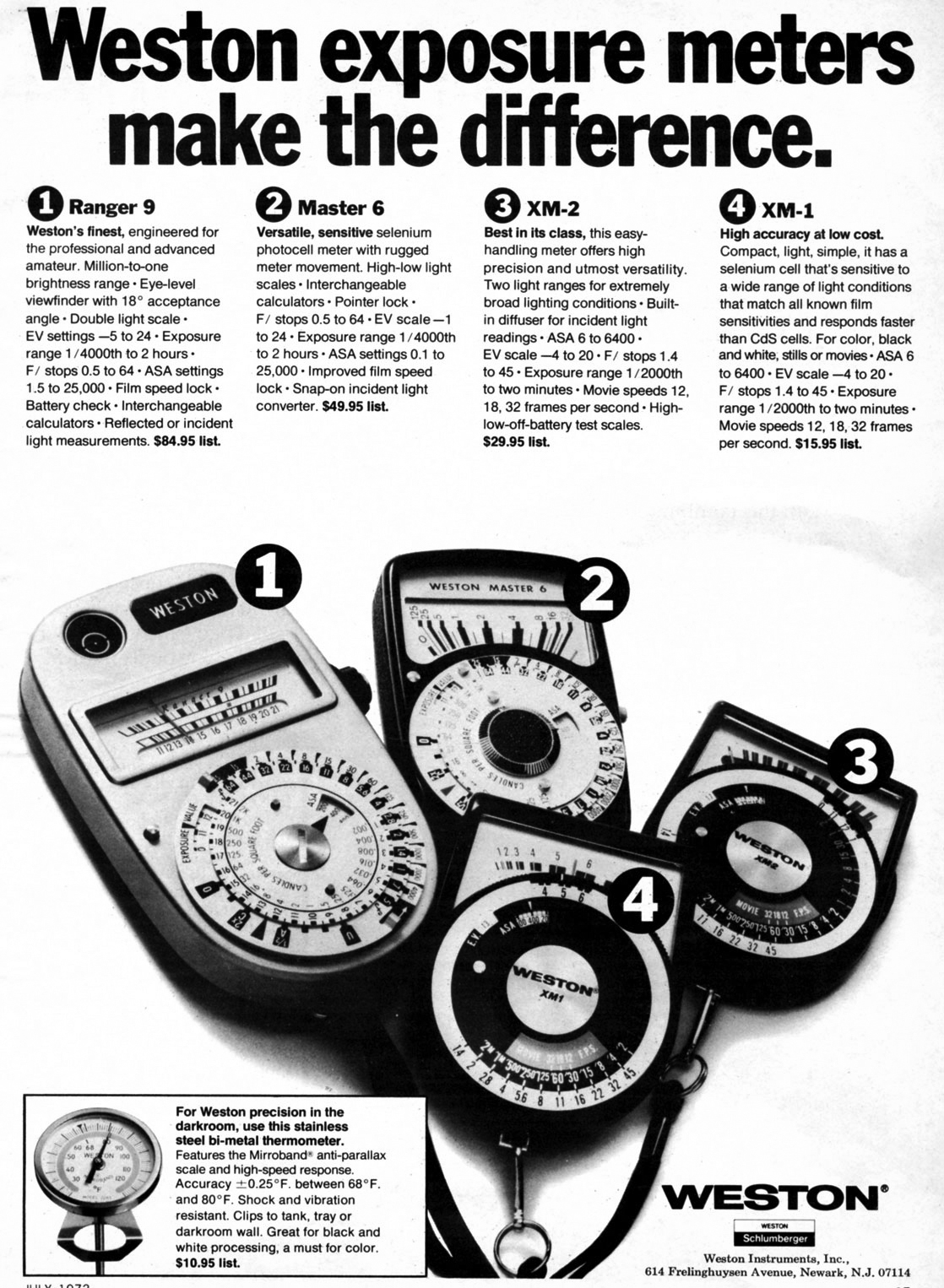
|
  Maker: Weston Instrument Model: Model 560 Master 6 Circa: 1972 Price (new): $49.95 Cell type: Selenium Measure type: Reflecting/Averaging and 3D Incident |
|
All three are less than highly regarded from what I've read around the net, but the poor Master 6 gets the brunt of it. Meters generally don't get mentioned much anyway, but the ones people really like tend to get mentioned, and the ones people dislike are simply ignored. The Master 6, on the other hand, generates a certain animosity when brought up. The main problem is its pedigree. Weston Electrical Instrument made the original Masters I through V, but left the commercial market in the early 70s. Even then, the American plant in New Jersey (where Weston was based) quit making meters around 1960. The Masters IV and V both came from its English sister, Sangamo-Weston. Weston, by the 70s, was owned by a company called Schlumberger and they pulled Weston out of the commercial photographic meter business. So the Weston name went to "Weston Instrument," located in Monterey Park, California (close to Los Angeles). Whether that company bought it or just licensed it—who knows. Whether it was an American company or a Japanese company with an American nexus—who knows. All we really know is they ordered up three new meters with the Weston name. So who made it? For awhile I thought it Sekonic, but that doesn't fit. Sekonic had a full catalog and didn't need to compete against itself by supplying competing brands. Capital and Kuwano, on the other hand, were electrical instrument companies who sold meters under other names, so I think one of them made it. So back to the meter itself: it's obvious that they tried to make the next Weston Master version, something the original company might have done themselves if they'd continued on. The layout is familiar: they have the dual sliding foot candle scale. The difference here is that the baffle slides up and down instead of swinging out on a hinge (personally I like this new method better). The meter face is black on bare metal (or aluminum-looking paint). The calculator dial is very similar to the Master V but is calibrated in ½ stop increments instead of thirds (again, I find that a better fit, as most cameras of that era use half-stop steps, not thirds). It's got a zero adjust, something that disappeared on most meters by that time, and an invercone (a 3D incident attachment that goes over the cell— in fact I like this one better than the one that fits the Master IV and V). They even had the famous twin-flap case so you could expose both the front and the back of the meter without taking it out of the case. And you could order an optional Zone System calculator dial and swap this one out. I do find the calculator dial annoying. It runs backwards to what I'm used to. Usually you set the film speed, then turn it to match a needle or point to a value on the meter scale. On this one you turn arrow to the foot candle value first, then rotate everything around to bring up your film speed, and that gives you the combinations. It works, but it's weird. What kills this meter is the plastic. Even though it's the same dimensions as the Master V, it has a complete plastic case whereas the Master V had a metal front. Also, the V had a big magnet inside that gave it a lot of heft. The V weighs about 5.8 US ounces, while the Master 6 is less than half, at around 2.7 oz. I think they would have done better to add some ballast to bring it up to the 5 oz mark, because even though people like things light and compact, a certain amount of weight is often a sign of quality inside. The Master 6 just feels too light to be taken seriously. The other thing is the lanyard it comes with, which is also light plastic. It's great in that it's almost indestructable. Mine's 30-some years old and looks brand new, but it also screams cheap. The old shoelace lanyards (literally the same thing they made men's shoelaces out of, but longer) would have been a better marriage with this meter. Especially for the asking price of $50, which was pricey in 1972. |
|
©opyright by James Ollinger. All Rights Reserved.
Company names and models are registered trademarks of their respective owners
and are not affiliated with this website in any way.

